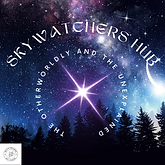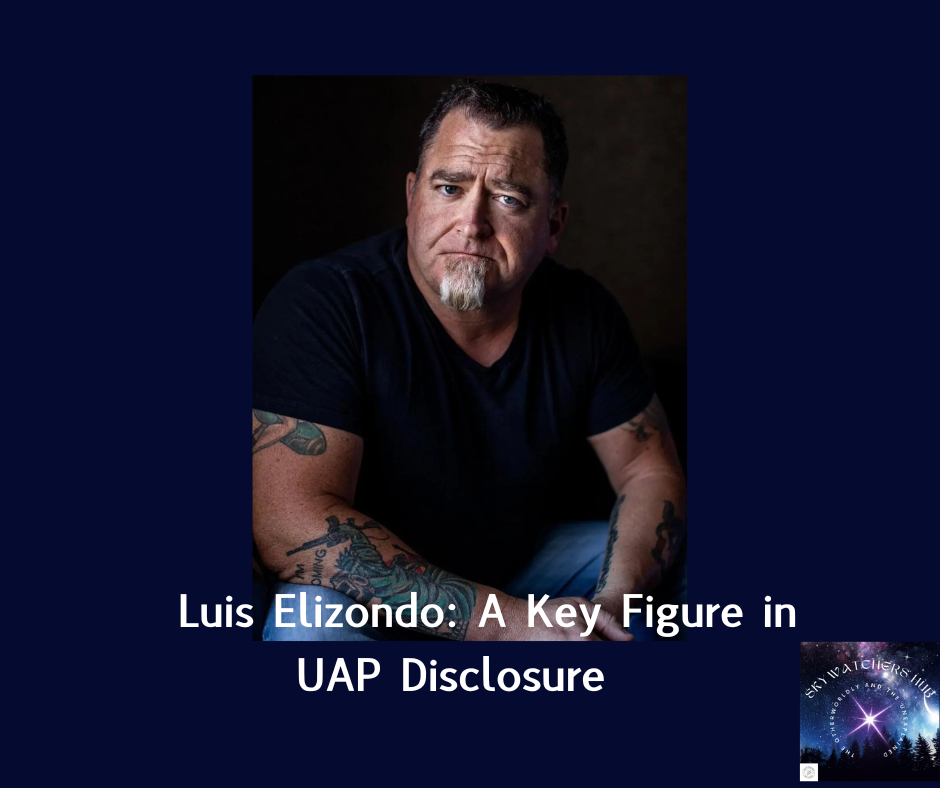Jay Stratton: The Former Director of the U.S. UAP Task Force Leading the Charge for UAP Disclosure
- Skywatcher's Hub

- Mar 3
- 5 min read

In the world of UAP (Unidentified Aerial Phenomena) disclosure, few figures carry as much weight as Jay Stratton. As the former director of the U.S. government’s Unidentified Aerial Phenomena (UAP) Task Force, Stratton played a pivotal role in the government’s effort to study and understand the phenomenon that has intrigued the public for decades. Stratton’s background, career, and involvement in the UAP Task Force have uniquely positioned him to be an influential voice in the movement for transparency and accountability regarding the U.S. government’s handling of UAPs. But what led Stratton to this role, and how has his experience shaped his current work advocating for UAP disclosure?
From Military Intelligence to the UAP Task Force

Jay Stratton’s career began in the U.S. military, where he developed a strong foundation in national security and intelligence. Serving as an intelligence officer, Stratton became adept at analyzing complex data, managing classified information, and overseeing sensitive national security operations. His time in the military allowed him to hone the skills necessary to navigate the world of covert government operations and the management of classified materials. Stratton’s work in defense and intelligence brought him into close contact with some of the most secretive areas of U.S. government activity.
It was this deep experience with military intelligence that ultimately led him to become involved in the UAP Task Force, a covert government initiative created to investigate and analyze UAPs reported by military personnel and civilian sources alike. As part of the U.S. Department of Defense (DoD), the task force was responsible for examining potential national security threats posed by UAPs and determining the origin, capabilities, and intentions of these mysterious phenomena.
Given his background, Stratton was uniquely qualified for the task. He was no stranger to high-stakes government operations and was already entrenched in the world of classified intelligence and defense. His expertise in aerospace defense, coupled with his ability to analyze highly sensitive data, made him a natural fit to lead efforts aimed at uncovering the truth behind UAPs.
The UAP Task Force: A New Era of Government Investigation

The creation of the UAP Task Force marked a significant shift in the U.S. government’s approach to the UFO/UAP phenomenon. Prior to its formation, there was a longstanding pattern of government denial and secrecy surrounding UAP sightings. The phenomenon was either dismissed as a national security concern or ignored altogether. However, with the formation of the UAP Task Force in 2020, the U.S. government took an unprecedented step by formally acknowledging the need to investigate UAP encounters, particularly those involving military personnel and government assets.
As the director of the UAP Task Force, Stratton oversaw the analysis of hundreds of UAP reports, many of which came from military personnel with credible backgrounds. The task force worked to evaluate potential threats posed by UAPs, as well as to determine whether these encounters were evidence of foreign adversaries’ technological capabilities or something far more extraordinary. Stratton’s leadership role meant that he was at the center of an effort that was pushing the boundaries of government transparency on an issue that had long been kept in the shadows.
Under Stratton's direction, the task force compiled evidence, analyzed video footage, and investigated pilot testimonies from incidents involving UAPs. These included high-profile encounters, such as the 2004 Nimitz UFO incident, in which U.S. Navy pilots encountered a UAP off the coast of California, and the 2014-2015 “Tic Tac” UFO sightings, which have since become some of the most well-known UAP incidents in modern history.
The UAP Task Force helped bring attention to the growing number of credible military encounters with UAPs and set the stage for a new era of public interest and governmental responsibility in understanding these phenomena.
From Secrecy to Transparency: Pushing for Disclosure

Though Stratton’s work was initially shrouded in secrecy, it was clear that his role in the UAP Task Force would eventually lead to broader public awareness. As reports of UAP encounters continued to surface, Stratton and his colleagues began to recognize the potential implications of these phenomena—not just for national security, but for humanity’s understanding of the world and the universe.
The task force’s findings were compelling. Stratton was part of a team that realized that some UAPs exhibited capabilities beyond anything currently understood in terms of physics, aerospace engineering, and technology. The U.S. government had gathered decades of evidence related to UAP encounters, yet the findings had been buried in classified reports or outright dismissed.
Stratton was instrumental in making the case that these encounters were not anomalies or one-off events, but part of a broader pattern that warranted serious investigation. His time leading the task force showed him the vast amount of unexplained data the government had collected on UAPs, and this realization deepened his commitment to transparency and disclosure. He believed it was time for the U.S. government to stop hiding behind secrecy and to start being more open with the American public about the information it had gathered regarding UAPs.
The Transformation into an Advocate for UAP Disclosure

After leaving the UAP Task Force, Stratton's role in the UAP disclosure movement did not end. His personal journey from intelligence officer to whistleblower became crucial in advancing the discussion surrounding government transparency. He began to advocate for a more open investigation into UAPs, emphasizing the need for greater cooperation between the government, the scientific community, and the public. Stratton’s advocacy is focused on encouraging government officials to take these phenomena seriously and treat them with the respect and scientific rigor they deserve.
Stratton is clear in his message: UAPs are not simply strange sightings or misunderstood events, but a phenomenon that could have profound implications for national security and our understanding of the universe. He has been an outspoken proponent of continuing investigations into UAPs and pushing for greater cooperation and information sharing between agencies. He also strongly believes that any new findings should be made available to the public as quickly as possible to foster greater understanding and scientific inquiry.
As a former government official with intimate knowledge of classified UAP-related information, Stratton’s words carry considerable weight in the ongoing debate about UAPs. His credibility, paired with his leadership role in the UAP Task Force, has allowed him to stand at the forefront of the UAP disclosure movement, calling for greater transparency and more scientific engagement with these mysterious phenomena.
Legacy: A New Path for UAP Research and Government Transparency

Jay Stratton’s legacy within the realm of UAP disclosure will likely be remembered for his pivotal role in elevating the U.S. government’s position on the subject of UAPs. By leading the UAP Task Force and publicly advocating for greater transparency, Stratton has contributed to reshaping the narrative surrounding these phenomena. His efforts have helped foster a more open environment for the discussion of UAPs and their potential implications for science, technology, and security.
Today, Stratton remains a key figure in the push for UAP disclosure, working alongside other experts, whistleblowers, and advocates to keep the momentum going. As the U.S. government continues to release more information and encourage independent investigations into UAPs, Stratton’s influence and leadership in this field continue to play a critical role in ensuring that the truth about UAPs is revealed.
For many, Jay Stratton is more than just a former director of the UAP Task Force—he is a symbol of the shift in how we view and understand the unexplained aerial phenomena that have baffled humanity for centuries. Whether through his work within the task force or as an advocate for disclosure, Stratton’s career is a testament to the power of transparency, open investigation, and the pursuit of truth in the face of uncertainty.

.png)













Comments